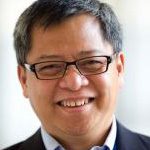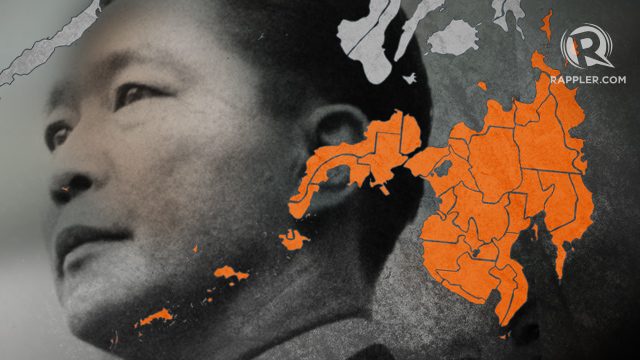SUMMARY
This is AI generated summarization, which may have errors. For context, always refer to the full article.

The contradictions are beginning to show, and it is unfortunate that – for me at least – they go back to Mindanao, President Duterte’s home island.
When the President deemed Marcos a hero and a soldier who fought with honor in World War II, it was bizarre how he overlooked what the dictator did to Muslim Mindanao while remembering General Leonard Wood and Bud Dajo.
The war, argues a couple of the President’s supporters, was a rebellion by a community that wanted to leave the Republic in the first place, and the MNLF was getting military assistance from Libya (a terrorist state) and Malaysia (which refused to return Sabah to us, its rightful owner). Thousands of Moros were killed, wounded and forced to leave their homes – but these were the consequences of war. Besides, Marcos’s war never affected the Christian/settler side of the island.
Alas, not true.
The dictatorship weakened the MNLF by convincing Libya to compel the MNLF to accept arbitration, but it did not anticipate the growth of the Communist Party of the Philippines (CPP). The CPP had overcome its initial setbacks, and through sheer determination and creativity, it expanded in areas where communists had not gone before.
The details of this incredible expansion are still incomplete, but we know its general contours. The Party created a Mindanao Commission to oversee the development of the NPA and the urban underground in the Christian provinces. There were attempts to organize among the Maranaos and Magindanaos, but these fizzled out, with one cadre abandoning the Party and joining the MNLF.
The dictator responded by just expanding the AFP’s killing zone to the entire eastern Mindanao seaboard, the two Misamis provinces, Zamboanga del Norte and Bukidnon. Other parts of the country were not spared: where the revolution spread, the military followed. Soon much of the archipelago had become a militarized zone.

In his book, “The Philippines: People, Poverty, and Politics” (published by St. Martin’s Press in 1987), Leonard Davis included the following statistics on disappearances, extrajudicial killings, and arrests between 1977, the year when the MNLF war receded and 1985, the eve of the fall of the dictatorship.
Disappearances (1977-1985)
Total: 703
Manila: 27 (3.8 percent to total)
Luzon: 142 (20.1 percent to total)
Visayas: 89 (12.6 percent to total)
Mindanao: 445 (63.3 percent to total)
Extrajudicial killings (1977-1985)
Total: 2,384
Manila: 12 (0.5% of total)
Luzon: 490 (20.5% of total)
Visayas: 371 (15.5% of total)
Mindanao: 1,511 (63.3% of total)
Arrests (1977-1985)
Manila: 2,968 (15.4% of total)
Luzon: 2,613 (13.6% of total)
Visayas: 1,728 (9.0% of total)
Mindanao: 12,888 (67.1% of total)
The figures show which part of the country had suffered the most under the dictatorship. Over half of the disappearances, extrajudicial killings and arrests happened in Mindanao. The sufferings and deaths were not as intense as in the Muslim zones, but these were still devastating, given that before Martial Law, there was relative peace in these areas.
Moreover, the good thing was that despite the cruelty heaped on them, Mindanawons found a way to fight back. There were the NPA and the MNLF, but there were also ordinary folks who resisted in their small ways – denying the enemy local resources, invoking religion to shame the occupation army to guilt, to appealing to civilian leaders and, in certain cases, Marine commanders, to defend them.
By 1984, the tide had turned.
The AFP had lost its fighting capacity, the rank-and-file questioning why they were in Mindanao. Factionalism had weakened the institution as middle level, and younger officers began to challenge the senior leadership and their civilian bosses. The Reform the AFP Movement that the writer Criselda Yabes and historian Alfred W. McCoy wrote about was born in Mindanao. The Young Officers’ Union (YOU) and the Magdalo leaders also earned their spurs in Mindanao, and their politicization was no different from the RAM. It was in response to the unbridled corruption on top and the unclear yet extremely politicized mission to Mindanao.
The CPP’s growth stopped when its leaders reined in then purged the Mindanao Commission. The latter also unraveled because of KAHOS – the internal campaign to weed out military infiltrators that deteriorated into the indiscriminate torture and killing of the revolution’s own. The party’s national strategy was never the same again since it eliminated a disobedient regional subordinate.
It is therefore incomprehensible how the Duterte administration can ignore these facts. It was not just the Moros who suffered from the brutality of the Marcos dictatorship; all of Mindanao suffered. One would expect the country’s first Mindanawon president to at least acknowledge that.
It was Marcos. Today, being Mindanawon comes with blinders, as the President’s political loyalty to a family trumps fidelity to the home island. – Rappler.com
Patricio N. Abinales is a teacher.
Add a comment
How does this make you feel?
There are no comments yet. Add your comment to start the conversation.